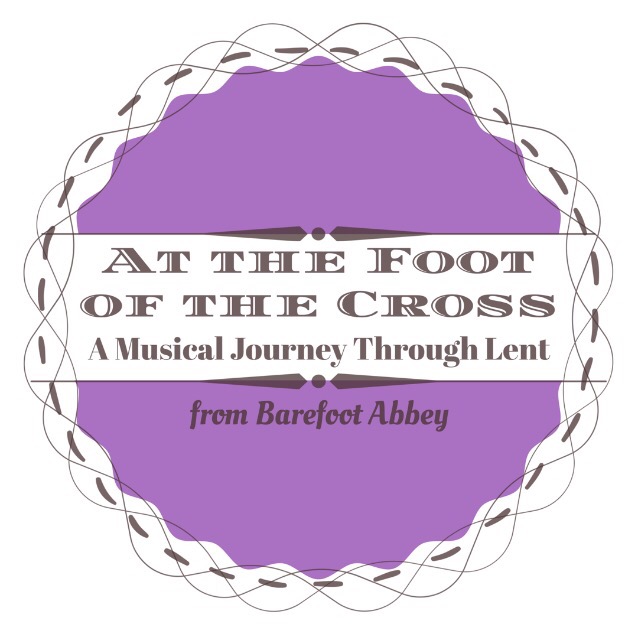
The third Friday of Lent is upon us! Hopefully your family has found its rhythm and is now in the full swing of the season. It always takes our family a little bit to reacquaint ourselves with the discipline of Lent. To those who may be just now starting this musical journey with us, feel free to take the plunge and join us with today’s listening selection and music appreciation lesson at the bottom of the post. Don’t worry, each lesson is independent of the previous week. You can find more ideas for participating in this Lenten devotion at the Overview post.
For your family’s free listening pleasure, here is the whole work:
Dvořák’s Stabat Mater
If you chose to include The Story of Dvořák listenings, where his biography is narrated over specific works, that playlist is below as well:
Week 3
Movement 3: “Eia, Mater” – Chorus
Latin Text:
Eia, Mater, fons amoris
me sentire vim doloris
fac, ut tecum lugeam.
English Translation:
O thou Mother! fount of love!
Touch my spirit from above,
make my heart with thine accord:
For our lessons this Lent, we will be using our family’s easy ABC method for listening with purpose. It is a simple three step process that can be used with the whole family and all ages. Your family will be listening to the piece with purpose at least once with specific actions in mind. The whole lesson typically takes around 15 minutes to complete if you include all three steps. It can be expanded based on length of pieces and the extent of conversation. This method is intentionally adaptable to fit all families in hopes that it will aid in fostering a love of music and meaningful connections in your home. Read through the lesson beforehand, then pull out and use what you know will work with your child(ren). Don’t be afraid to include the youngest of children too! My 1 year old daughter and goddaughter just dances around while listening and that is perfect!
Our Easy ABCs for Music Appreciation
Begin by gathering everyone together for your family listening time. Our family reads the text and translation then participates in the lesson.
If you have any questions please don’t hesitate to leave a comment. I want these lessons to be as user friendly as possible!
You can share what you like from the following or use it as an easy script:
Our listening for today is the third movement of Dvořák’s Stabat Mater, “Eia, Mater”. In the English translation of the half a stanza we read earlier, we see that this piece is a prayer pleading for our Lady to help unite us to her suffering, that our hearts would be pieced as hers was during Christ’s passion. This piece as a chorus features no solo voices since it is to be the cry of not one soul, but of all the Mother’s children. Dvořák depicts this further by offsetting the final, petition line, “fac ut tecum lugeam,” with its own separated sections in addition to its place in the other full text portions. This work is in 4/4 time, where each measure of music has four beats. In the first sung motive (musical idea) of the piece the lower voices introduce each line of text and are then mirrored by the higher voices. The melody (tune) and rhythm (length of notes) are the same until the end of the last line of text. The voices switch their order in the second motive (musical idea) and the higher voices take the lead and continue to alternate. The form of this movement is AA’, as the first section repeats but is changed in a small way.
Now onto the main processes of our Listening ABCs.
A – Attentive Listening
Before you play the piece for the first time, ask your family to close their eyes and listen silently. Ask them to try and get a feeling, picture, or story in their mind of what the music reminds them of. They may remember some of the text translation read earlier. We really want them to get their imaginations running for this first listening. Ask them to share what they saw in the music. There is no right or wrong answer.
B – Bodily Movement
Now we’re going to add a bodily movement to help our brains connect our memory and the music. Your family may listen to the piece a second time here while tapping the 4/4 beat with on their lap. You may choose to have your family count the 1,2,3,4 of the music as well, either all together or silently. The beat is slower than the rhythm of the string instruments that begin the piece and the voices come in on a 4 beat.
C – Conversation
This concluding segment is where we talk about the elements we hear in the music. Each time your family listens with purpose using these ABCs, they will hear and be able to verbalize more and more. Any observation is welcome and should be praised during this listening. In this section you may choose to have your family listen to the piece one last time while pointing out the elements of the music they recognize. Your family may also go straight on to the discussion. Can anyone share differences between the two A parts of the music? What instruments were heard – the strings at the beginning or the Tympani playing during one of the “fac ut tecum lugeam” portions? The mood of the piece can also be discussed here by asking how the music made your family feel and sharing your own response. There is no wrong answer to this question. Here you can also remind your family of the prayerful intent of the text. Does you family think that the music successfully showed that intention? Can they give examples from parts of the piece? In the language of music this is called “text painting.”

